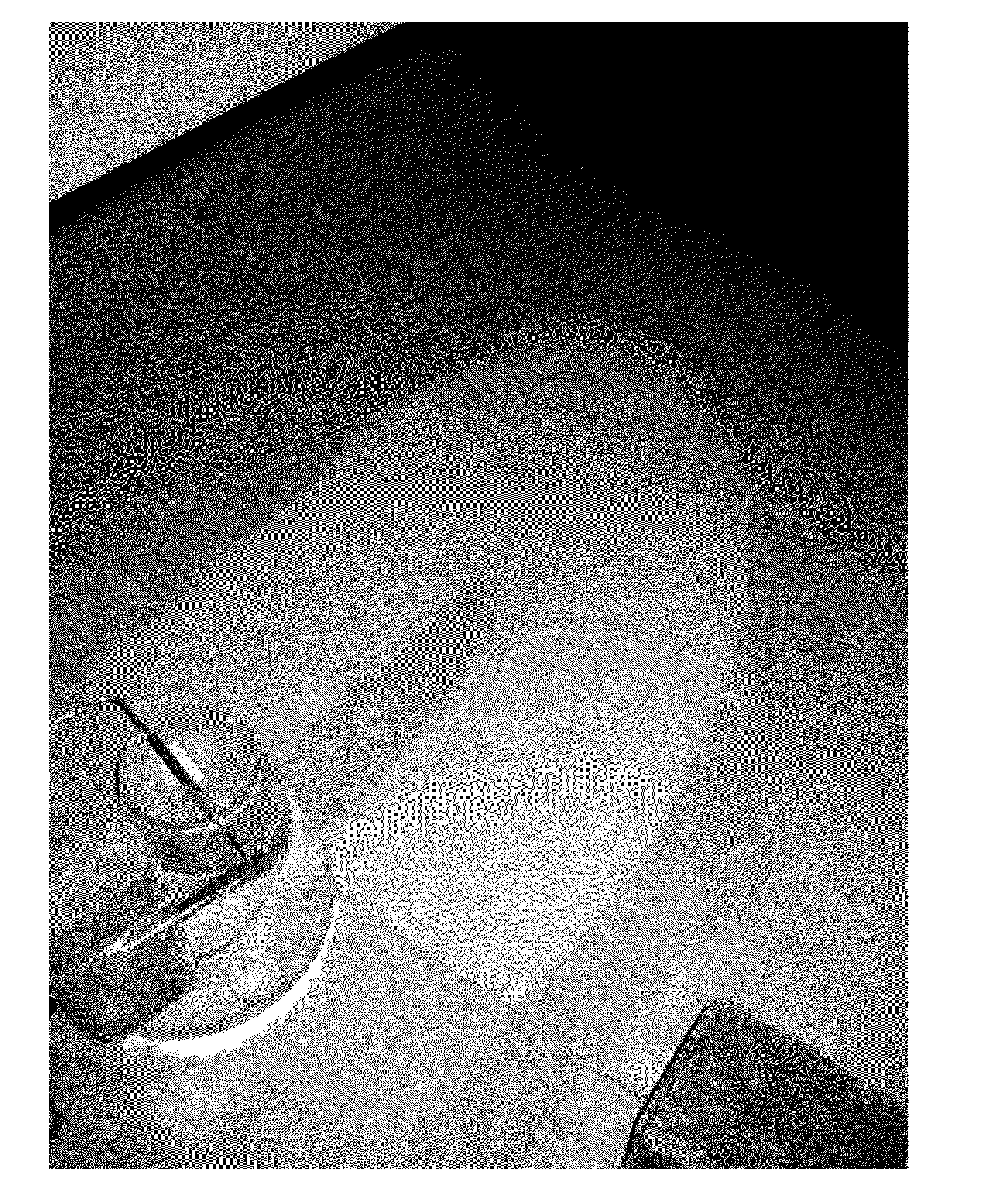Composite material, manufacturing process therefor and uses thereof
a technology of composite materials and manufacturing processes, applied in the field of composite materials, can solve the problems of not being able to adequately clean hard surfaces, and achieve the effects of less abrasive, less abrasive, and less abrasiv
- Summary
- Abstract
- Description
- Claims
- Application Information
AI Technical Summary
Benefits of technology
Problems solved by technology
Method used
Image
Examples
examples
[0139]The floor cleaning tests were performed with various types of motorized floor cleaner as specified under the particular series of experiments either with a single 13 inch (33 cm) diameter pads laminated with a non-woven polypropylene backing which was attachable to the floor cleaner or with two 13 inch (33 cm) diameter pads each laminated with a non-woven polypropylene backing. The tests were performed on an industrial “flat floor” i.e. a concrete a floor and floors with an epoxy finish and with a terrazzo finish all with only minor surface irregularities and epoxy-finished floors with type R10 and R11 anti-slip surfaces according to DIN 51130, e.g. an Artline® floor coating. The Soltec Artline® floor coating is applied to concrete or screed which is clean, dust-free, dry, at least three weeks old and provided with an impregnation primer in the case of porous surfaces by applying four epoxy-layers, the first two with black particles dispersed therein which after hardening are ...
examples 1 to 6
Evaluation of Pads Comprising the Composite Material According to the Present Invention on Floors with Minor Surface Irregularities with Water Only i.e. without Cleaning-Enhancing Additives
[0144]The observations made in the evaluation of 33 cm (13 inch) diameter pads of M-F resin and type A, B, C, D and E composite materials on the cleaning of industrial floors using a Wetrok® Servomatic 43 KA motorised floor cleaner with a single pad rotating at 160 rpm and water without any cleaning-enhancing additives are summarized in Table 3 below.
TABLE 3Initialcleaningcleaningpadqualitypolishing effectlifetime withcompositethicknessepoxyterrazzo andmotorized floorExamplematerial[mm]floorsconcretecleaner [m]1 (comparative)100* M-F resin20goodnone2 (invention)A20goodnone3 (invention)B20goodnone4 (invention)C20goodvisibly observable>30305 (invention)D20goodnone>30306 (invention)E15goodnone>3030 &*pads are cut from blocks of M-F resin without post-manufacturing thermal compression
The cleaning effe...
examples 7-12
Evaluation of Pads Comprising the Composite Material According to the Present Invention with Water with Degreaser with Floors with Minor Surface Irregularities
[0145]The observations made in the evaluation of 33 cm (13 inch) diameter pads of M-F resin and type A, B, C, D and E composite materials on the cleaning of industrial floors using a Wetrok® Servomatic 43 KA motorised floor cleaner with a single pad rotating at 160 rpm And water with a degreaser (100 mL of 5 Brix in 3 L of water i.e. 0.17 Brix) are summarized in Table 4 below.
TABLE 4cleaningpolishingInitiallifetime witheffectpadcleaningdamage to pads aftermotorizedterrazzocompositethicknessquality2285 m cleaning offloor cleanerandExamplematerial[mm]epoxy floorsepoxy floor[m]concrete 7 (comp.)100* M-F20very goodparts ripped offnoneresin 8 (inv.)A20very goodlittle wear / damagenone 9 (inv.)B20very goodlittle wear / damagenone10 (inv.)C20very goodlittle wear / damage>3030visiblyobservable11 (inv.)D20very goodlittle wear / damage>3030none...
PUM
| Property | Measurement | Unit |
|---|---|---|
| density | aaaaa | aaaaa |
| density | aaaaa | aaaaa |
| density | aaaaa | aaaaa |
Abstract
Description
Claims
Application Information
 Login to View More
Login to View More - R&D
- Intellectual Property
- Life Sciences
- Materials
- Tech Scout
- Unparalleled Data Quality
- Higher Quality Content
- 60% Fewer Hallucinations
Browse by: Latest US Patents, China's latest patents, Technical Efficacy Thesaurus, Application Domain, Technology Topic, Popular Technical Reports.
© 2025 PatSnap. All rights reserved.Legal|Privacy policy|Modern Slavery Act Transparency Statement|Sitemap|About US| Contact US: help@patsnap.com



